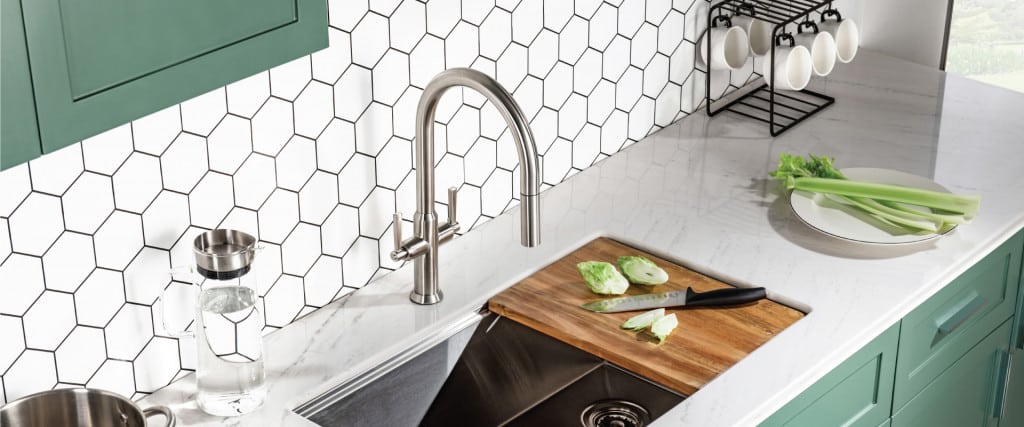
Faucets are one of the most frequently used fixtures in a home, and with time, they can develop issues that require either repair or replacement. While proper care and maintenance can extend the life of your faucets, knowing when to repair and when to replace is essential to saving money and keeping your home functioning smoothly. In this guide, we’ll cover everything you need to consider before deciding whether to repair or replace your faucet, the benefits of upgrading, and what to look for in a new faucet.
Faucet Repair: When to Fix Your Faucet
Replacing worn parts such as washers, seals, or cartridges can often extend the life of your faucet. Minor leaks, drips, or reduced water flow are common problems that can usually be resolved with simple repairs. Here are some scenarios where repairing is the best option:
- Minor Leaks or Drips: Leaking faucets often result from worn-out seals or washers. Replacing these parts is inexpensive and can stop the leak immediately.
- Loose Handles or Reduced Water Flow: Issues like loose handles or weak water flow are typically caused by mineral deposits or faulty cartridges. In such cases, cleaning or replacing the cartridge can restore functionality.
- Preserving Original Design: If your faucet is a unique vintage model or has an aesthetic that complements your space, repairing it might be preferable to replacing it.
However, keep in mind that while repairs can be a cost-effective solution, they might only offer a temporary fix. In some cases, repaired parts may fail again, which means more frequent maintenance and increasing costs over time.
Faucet Replacement: When to Upgrade
There comes a point when repairing an old or problematic faucet is no longer cost-effective. Replacing a dated faucet with a newer model can not only save you money in the long run but also improve the overall look and efficiency of your kitchen or bathroom. Here are some instances where replacement is the better choice:
- Frequent Repairs: If your faucet requires constant repairs, it may be more economical to replace it altogether. Continual leaks or recurring issues are signs that the internal components are worn out.
- Rust or Corrosion: Visible rust or corrosion on your faucet is a clear indication that it is time for a replacement. Rust can impact water quality and indicates that the material is degrading.
- Water Efficiency: Older faucets tend to use more water compared to modern models, which come equipped with water-saving features like aerators. Upgrading to a water-efficient faucet can significantly reduce water consumption, saving you money on utility bills and helping the environment.
- Aesthetic Upgrade: Sometimes, replacing a faucet is simply about updating the look of your kitchen or bathroom. Modern faucets come in various finishes and styles that can instantly enhance the aesthetics of your space.
Choosing a New Faucet: What to Consider
When it’s time to replace your faucet, there are several factors to consider to ensure that you select the right one for your needs:
- Type of Faucet: Decide between a single-handle or double-handle faucet. Single-handle faucets are convenient for adjusting temperature with one motion, while double-handle models allow for more precise control over hot and cold water.
- Mounting Style: Consider whether you need a center-set, widespread, or wall-mounted faucet based on your existing sink configuration. Most kitchen sinks come pre-drilled with 1-4 holes, so make sure your new faucet is compatible.
- Sprayer Options: For kitchen faucets, you can choose between built-in sprayers, side sprayers, or pull-out/pull-down sprayers. Sprayers provide added flexibility for washing dishes and cleaning the sink.
- Finish and Material: Faucets are available in a variety of finishes, including chrome, stainless steel, matte black, and brushed nickel. Choose a finish that complements your existing decor. Additionally, consider materials like brass or stainless steel, which are known for their durability.
Benefits of Upgrading to a New Faucet
- Water Conservation: Many new faucets feature low-flow aerators that reduce water consumption without sacrificing pressure. This can lead to significant savings on water bills.
- Improved Functionality: Modern faucets offer advanced features such as touchless activation, temperature memory, and enhanced water filtration that improve convenience and usability.
- Enhanced Durability: New faucets are designed to withstand wear and tear better than older models. Materials like solid brass or stainless steel are highly durable and resistant to corrosion.
Trust My Georgia Plumber for Your Faucet Repair and Replacement Needs
Whether you’re dealing with a leaky faucet or looking to upgrade to a new, efficient model, My Georgia Plumber is here to help. Our licensed technicians have extensive experience in repairing and installing all types of faucets, ensuring that your home’s plumbing remains in top condition. We provide personalized recommendations, high-quality workmanship, and reliable service to make your faucet installation or repair a stress-free experience.









